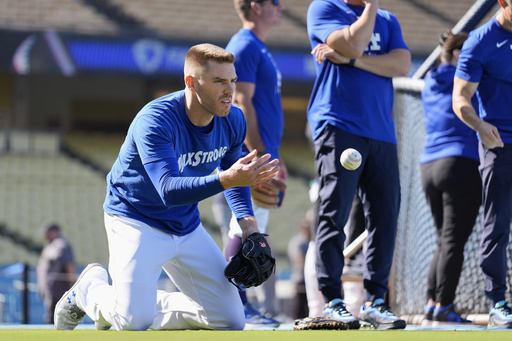Los Angeles Dodgers’ first baseman, Freddie Freeman, was forced to exit Game 2 of the NL Division Series against the San Diego Padres after playing five innings on Sunday night. His departure was due to discomfort in his sprained right ankle, a condition that hindered his performance on the field. As a result, Max Muncy stepped in to replace Freeman, while Kiké Hernández took over at third base, shifting the team’s dynamic as they battled through the game.
During his time on the field, Freeman had an underwhelming performance, striking out and flying out in his two at-bats. This was in stark contrast to his previous game in Game 1, where he managed two hits and a strikeout. The 35-year-old player, who boasts an impressive eight All-Star appearances, revealed that this ankle sprain was a first-time experience for him. He shared that medical advice indicated a typical recovery period of four to six weeks on the injured list, highlighting the severity of his injury.
Freeman’s absence from the game undoubtedly posed a challenge for the Dodgers, as they navigated their way through a crucial series. The team had to readjust their lineup and strategies to fill the gap left by the absence of their seasoned first baseman. Despite this setback, the Dodgers remained focused on their goal of clinching victory in the NL Division Series, demonstrating resilience and adaptability in the face of adversity.
The impact of Freeman’s injury reverberated throughout the team and the broader baseball community, drawing attention to the physical demands and risks that professional athletes face in the pursuit of success. As fans and analysts awaited updates on Freeman’s condition and recovery timeline, speculation grew regarding the implications for the Dodgers’ performance in the upcoming games of the series. The setback served as a reminder of the unpredictable nature of sports and the need for teams to have depth and flexibility in their roster to overcome unexpected challenges.


